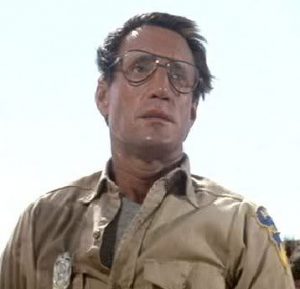How To Build A Great Movie Character

A good story needs a great cast of characters to be memorable. That’s why you should spend time building a great character. When you start your screenplay you need to think about the characters you are going to write about. There are ten things a character needs to be great. These all apply to main characters, villains, supporting characters and even minor characters. The ten keys to building a great character are:
- A Goal And An Opposition
- Motivation
- A Backstory
- A Point Of View And Attitude
- Revealing Action
- Growing Room
- Plausibility
- Details
- Research
- A Strong Supporting Cast
Lets look at each of these in detail.
 A Goal And An Opposition
A Goal And An Opposition
There is something that your character wants. The character’s goal should be specific and measurable. Seeking inner peace is not a measurable goal. Seeking the Presidency is a goal, you know when it has or has not been accomplished.
A good goal should be hard to achieve and worth fighting for. Nobody wants to watch a movie about a woman trying to find her spare set of keys. Whatever goal you choose for your character there also needs to be an opposition, an individual force trying to stop the character achieving the goal. That individual force should make the character sweat and work to achieve the goal, and face an inner fear.
For more on conflict, please CLICK HERE
Motivation
Now your character has a goal you need to ask yourself a question, why does the character want to achieve this goal? What is his motivation? The more personal the motivation the better. This is why there are so many movies where a character has their family kidnapped. There’s nothing more personal and motivating than that. A deeply personal motivation will allow the audience to relate to the character in your screenplay. This is how you create a relationship between the character and he audience.
A Backstory
The backstory is what happened to the characters before the movie began. Having a detailed backstory helps bring the characters to life rather than being instruments of telling the story. A character’s past should influence how they act and react to things. If their parents were involved in a messy divorce when they were young then they may be very wary of getting married themselves.
Backstory is a great example of the “show don’t tell” adage. Rather than have a dozen flashbacks try to bring out the backstory through the way the character acts, what they say and how they say it.
A Point Of View And An Attitude
Everyone has their own world view, attitude and thoughts and feelings. So should your character. These things are normally closely related to the character’s backstory. The backstory is the reason for the particular point of view and attitude the character has. A woman who has been cheated on by her last few boyfriends is likely, and acceptably, going to have a dim point of view towards men. Use the character’s backstory to create their point of view and attitudes.
Revealing Actions
Actions speak louder than words. You judge a character on the way they act, not on what they say or think. Imagine a character who dreams of committing murder every night, and is constantly thinking of ways to kill people…yet never does so because he realises it is wrong. Now imagine the opposite, a character who thinks and dreams of “normal things” yet one day, for no reason, goes out and knifes an innocent person to death. Who is the evil character?
Your characters (especially your main one) should always be willing to act, even if they don’t act in the way they directly think.
Growing Room
A “perfect” character is a boring character. They have everything they want and need so there’s no story to tell. Everyone knows someone whose life seems to go great beat for beat, you find yourself envious of them and willing them to fail. Instantly you should see from this that a good character should be imperfect. They have to be willing to try and change themselves for the better. Often they will try too hard and end up realising they were fine as they were, even if still aren’t perfect.
Plausibility
There’s a major difference between a character in a screenplay and a real life person. A character is single focused solely on attaining their goal while a real life person often have a lot of balls to juggle at once, causing a lack of focus. However you can make your character more plausible in a number of ways.
A character should have human emotions. If they stand there stone faced as the world is destroyed then they aren’t human, they’re a robotic character. Let them recoil in terror, or scream in anger. Let them react to situations the way a real human would. Remember though that humans often fight their emotions or try to hide them, but they still seep through.
They also need to have human traits and values. Your character could be a mean old grouch amongst those he works with yet have a heart of gold when with his family. This doesn’t mean the character is schizophrenic, just that he hates work and loves spending time with his family. Every character has a dark side and a good side. Even the “bad guy” has a glimmer of hope inside, even if its just the way he treats his plants. Plausibility means shades of grey, not blank and white.
Details
Details are the little things that make up life. They are the mannerisms, quirks, habits, idiosyncrasies and imperfections that make a character human. Along your way through life you pick up some very unusual traits. If you’ve seen Stranger Than Fiction you might remember that Harold Crick (Will Ferrell) brushed each of his thirty-two teeth seventy-six times. Everyone has something peculiar about them, you need to bring out those small details in your character.
Research
To create a great character for your screenplay you need to put time and care into them. This means a lot of research. There are two types of research. One is general research, the other is specific research.
For more on character research, please click here
A Strong Supporting Cast
One great character does not make a strong cast. You can have the most interesting character in the ever thought up but if they have no-one else with any depth to play off then they’re dead in the water. You need to put just as much care into every character you create as your main one. Whenever you start a screenplay you want to create at least four rich characters so you have plenty of room for interplay. This makes writing dialogue so much easier.
Your characters should share similarities as well as contrasts that bind them together. Remember that every major character must have their own unique function that moves the story forward.
Now you have learned about Building A Great Character. Build that character up, one brick at a time.
Please CLICK HERE To Check Out My Top 5 Online Scriptwriting Courses



This is very helpful! thank you! I’m using these as structures to build my characters =D